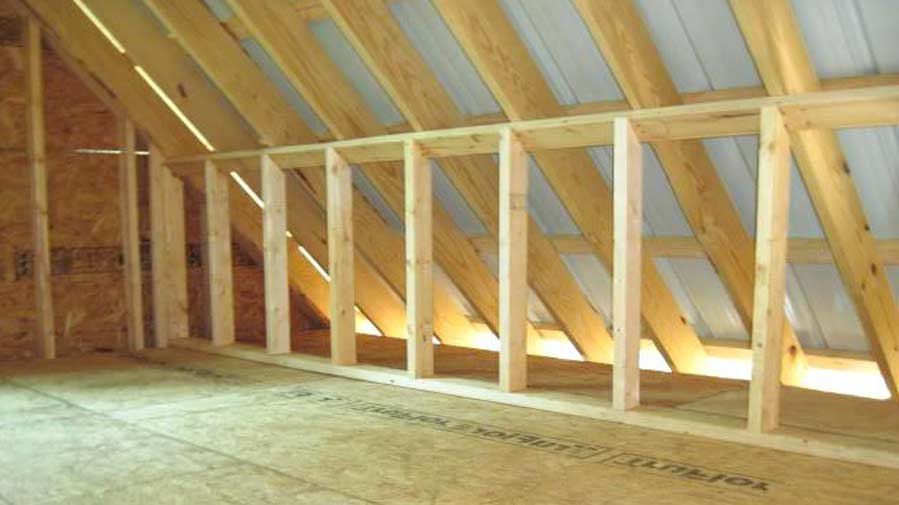What is a Knee Wall?


If you’re doing research on insulating your attic you may be seeing a term you aren’t familiar with – the knee wall.
So, what is a knee wall and why is it so important when it comes to supporting your roof and rafters.
Well, the human knee is part of the basis for naming this part of your attic.
That is where the knee wall gets its name, because of its association with the vertical location of the human knee. So, what is a knee wall exactly?
Honestly, the knee wall is responsible for a home being uncomfortable and not energy efficient.
While RetroFoam of Michigan is a foam insulation company, the point of this article isn’t to talk about insulation, but to help you better understand what the knee wall is and its purpose.
Knee Wall Definition
The knee wall definition is a short wall, usually just shy of 3-feet-tall, that supports the rafters in your attic. They are usually found in older homes where the ceiling on the top floor is an attic. For example, the ceiling is the underside of the roof and slopes down on the sides.
Another way to think of it is when you see an area of a home that would normally be a full attic space. Instead of the attic, this space has been converted into a room of some sort. The room is thought to be a part of the conditioned space of the home and is drywalled off, according to Sellair.
A sure sign there is a knee wall is if the ceiling is low sloping with an attic or roof space above that leads down a wall. Another sign Sellair points out is if the attic access is perpendicular to the floor.
Knee Wall Problems
I know I said we weren’t going to talk about insulation here, but we’re going to talk a little bit about insulation.
That’s because the knee wall causes a problem in your home because it can be overlooked when insulation was added, or it wasn’t adequately insulated. This is letting cold and hot air into your home, making this space uncomfortable year-round.
Ensuring the knee walls are properly insulated with a material that creates an air seal will keep the outside temperatures out, makes the space more comfortable, and more energy-efficient.
The best way to see how much air leakage is coming from the knee wall is to get a home energy audit or blower door test. This is best to do before you tackle the insulation, so you know exactly what you’re dealing with.
More Information on Air Seals
Now that you have a better understanding of what a knee wall is, you can continue your research into attic insulation.
If you would like to learn more about attic insulation and air seals, check out the Learning Center on our website.
About Amanda Ringler
Amanda previously has worked as a breaking news and crime reporter, TV news producer, and editor in Flint and Detroit. Throughout her career as a journalist, she has won several awards from The Society of Professional Journalists - Detroit Chapter and the Michigan Press Association. As part of the RetroFoam of Michigan family, Amanda uses her experience as a journalist to write content that will help educate homeowners on the benefits of foam insulation. When Amanda isn’t writing, she’s spending time with her husband and rescued huskies. She also loves knitting, making art, cooking, and hosting dinner and a movie night for friends and family.

.jpg)
